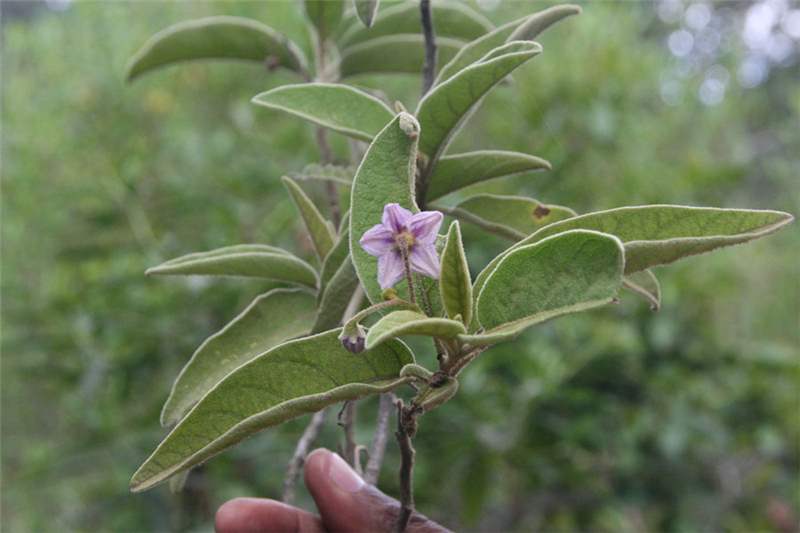Bitter Apple Summary
Scientific Name: Solanum incanum
Synonymns: Solanum incanum, Solanum sanctum, Solanum esculentum, Solanum subexarmatum, Solanum delagoense, Solanum beniense
Common Names: Intobo, Umucucu (Rwanda); Ndula (Kihene), Bwantula, Bwanhula, Mtula (Mizaramo), Ntufululu (Kibende), Hnyanya-mvitu (Kirufiji), Mtula (Kisambaa), Nangali (Kifiome), Mdangu (K1pare), Hatulu (Kisukuma), Indulele (Ki-arusha), Htobotobo (Kikerewe), Htobolo (Kijita), Htunguja, Hndulele (Kiswahili), Hdulamu, Htulantu (Kinyamwezi), Bitter Apple, Sodom Apple.
Habitat: Native to Sub-Saharan Africa, the Middle East, and India. It is mostly seen in disturbed and overgrazed areas and road sides, but also found in various types of woodland, and along the margins of riverine and evergreen forest (Fukuhara and Kubo 1991).
Traditional Uses
It is is especially valued for its analgesic properties and it is commonly used in Africa to treat a wide range of conditions. In Africa, it is used for treating angina, colic or indigestion, dandruff, fever, general infection, headache, liver pain, painful menstruation, skin diseases, snake bites, sore throat, stomach ache or abdominal pain, and wounds, liver pain and pain caused by onchocerciasis, pleurisy, pneumonia and rheumatism. Treatments or medications are done by drinking leaf, root and fruit decoctions, chewing and swallowing root sap, washing painful areas with leaf sap, and topically applying the plant’s ash mixed with fat.
A decoction of the roots is used for abdominal pains, dyspepsia, fever, stomachache and indigestion. The roots can be used for toothache by scrubbing the affected tooth with pieces of root.
Young leaves are chewed and rubbed hard into a recent snake bite, while an infusion of leaves is applied to the ear as a remedy for earache.
For fresh cuts or wounds, break the fruit and apply the contents. The plant is also widely used for chest pains, ringworm, and syphilis. The fruit juice applied over a finger with a whitlow is said to draw it out. The fruits are also used for the treatment of skin diseases. The fruit’s juice is squeezed into sheep’s nostrils to cure sheep cough.
In the treatment of delayed expulsion of afterbirth, pieces of the root are boiled and the brew taken in a single dose; or the root is dried, ground and mixed with porridge (Harjula, 1980).
The fruit is used as a snake-bite remedy, the root for abdominal pains, liver trouble and carbuncle, and the gall for earache. The plant is also used as a remedy for toothache and sorethroat (Watt and Breyer-Brandwick, 1962).
A decoction of the roots is used a a remedy for stomachache, epilepsy, convulsions in children and hernia. For constipation a fresh fruit is cut and the contents smeared on the anus. The ripe fruit is crushed and smeared on the toes to get rid of or prevent infection by jiggers.
The fruits of S. incanum is used for medicine, pesticides, soaps, and tanning.
S. incanum is effective for control of cattle ticks when used as water extracted concoction. The whole dry ripe fruits are crushed and extracted in water at 5% w/v for 24 h and this is then sprayed onto cattle (5L/animal).
Biological studies have indicated that the S. incanum plant could be used for treating cutaneous mycotic infections and other pathological conditions. A potent antimicrobial substance with phosphorylated structure similar to the purine ademine stops the growth of gram positive and gram negative bacteria, yeast, dermatophytes, and some agricultural pathogens. (Chhabra, Pers. Comm.) S. incanum contains solanine which has a direct effect on the mucous membrane of the alimentary tract and when absorbed into the blood stream brings about haemolysis of the red cells.
Food Uses
The green, unripe fruit is eaten raw or cooked. Whilst occasionally eaten raw, it is more often cooked as a seasoning in soups etc. Leaves: They are added to soup to improve the flavour. Care needs to be taken that only the improved varieties, with lower levels of alkaloids, are used for food.
Contraindications/Precautions
It produces stimulation of the central nervous system followed by depression and even paralysis of the respiratory or motor centres and, in large doses, cardiac arrest.
Preparations
All parts of the plant are used – usually the leaves, roots or fruits are used in decoction, or the roots are chewed or the sap swallowed.
 Loading...
Loading...
 Loading...
Loading...
This article is copyrighted by Ital is Vital, 2025. Want to re-post this article? Visit our guidelines.
DISCLAIMER: THIS WEBSITE DOES NOT PROVIDE MEDICAL ADVICE
The information, including but not limited to, text, graphics, images and other material contained on this website are for informational purposes only. The purpose of this website is to promote broad consumer understanding and knowledge of various health topics. It is not intended to be a substitute for professional medical advice, diagnosis or treatment. Always seek the advice of your physician or other qualified health care provider with any questions you may have regarding a medical condition or treatment and before undertaking a new health care regimen, and never disregard professional medical advice or delay in seeking it because of something you have read on this website.
